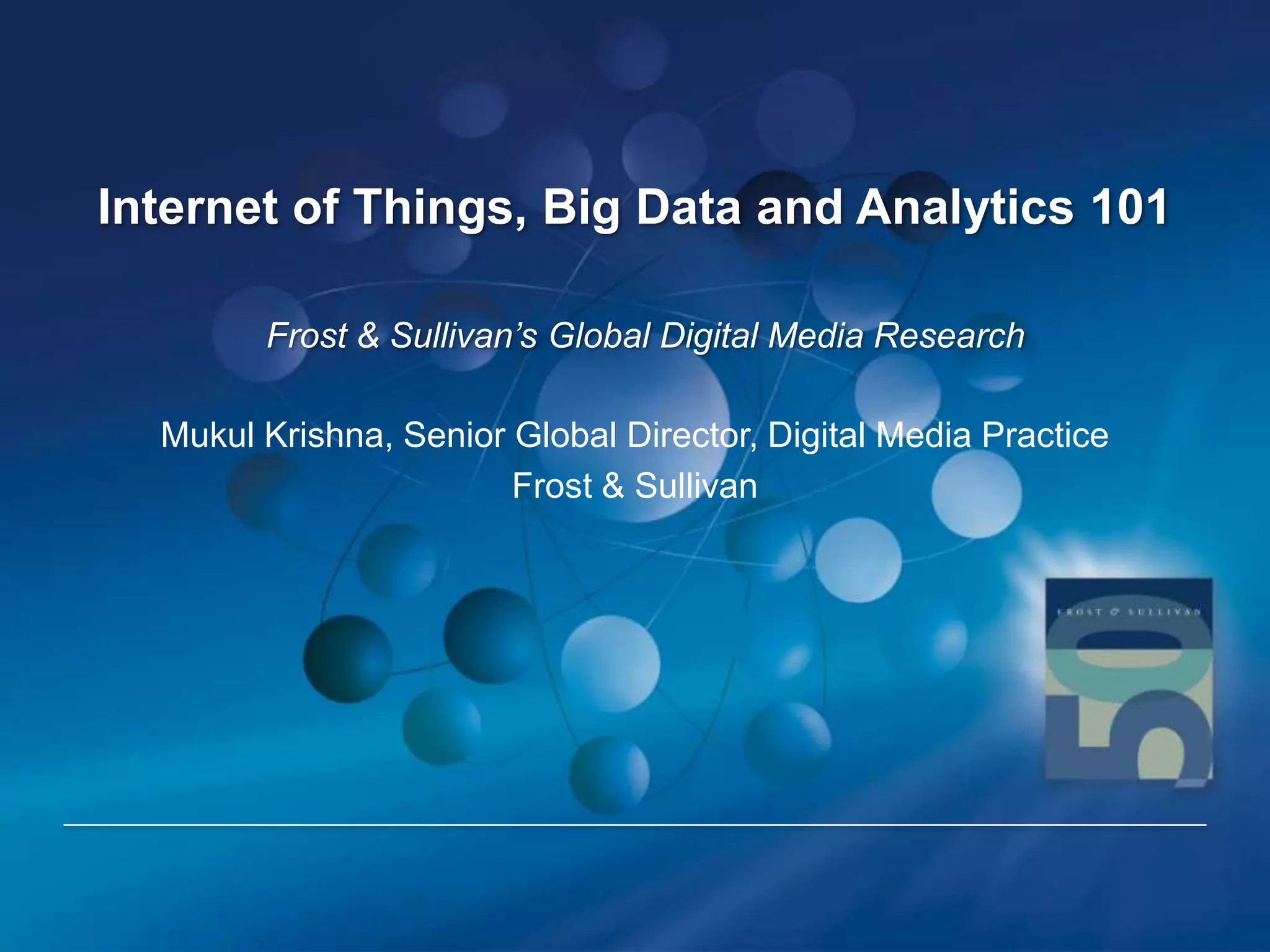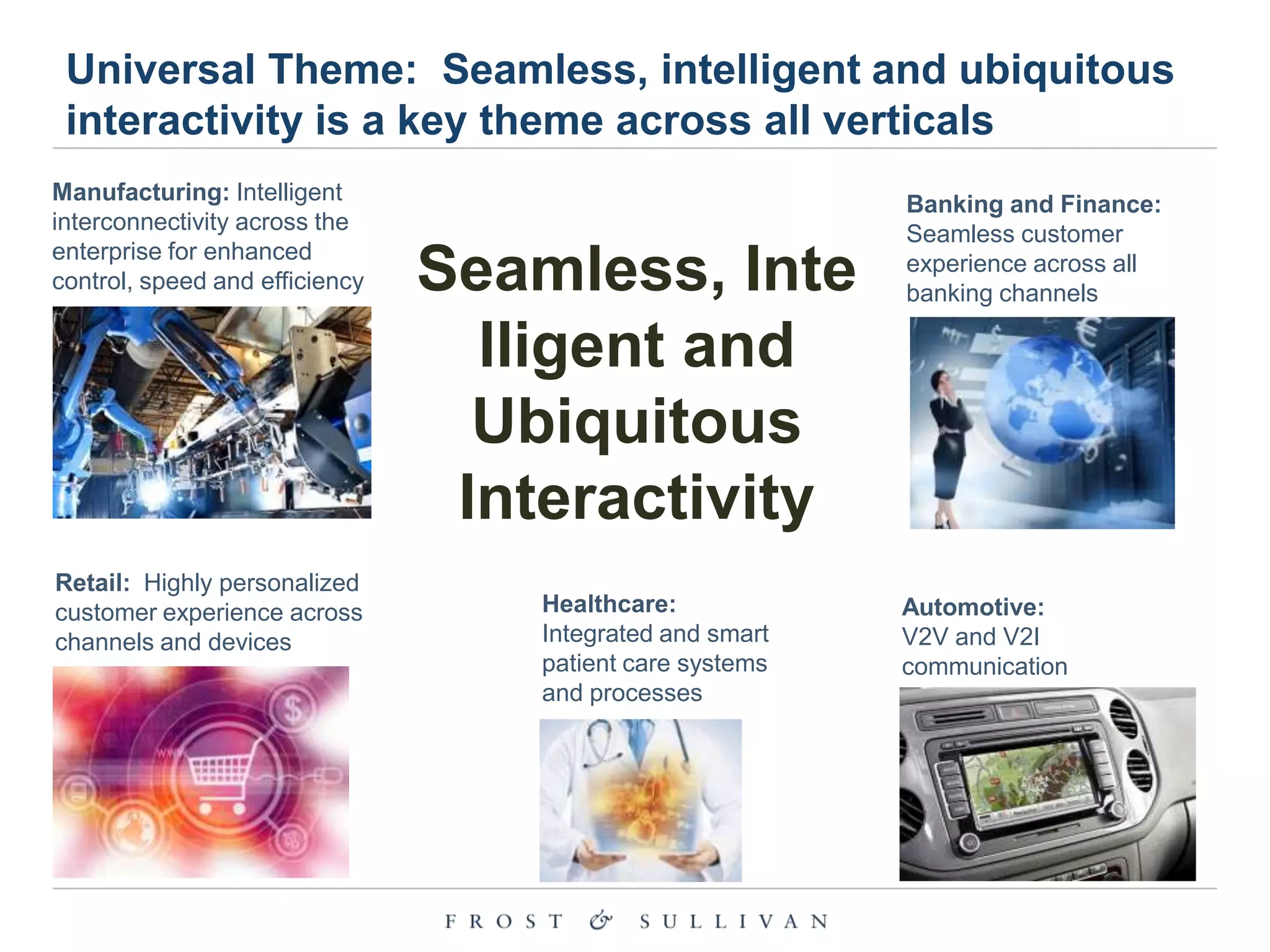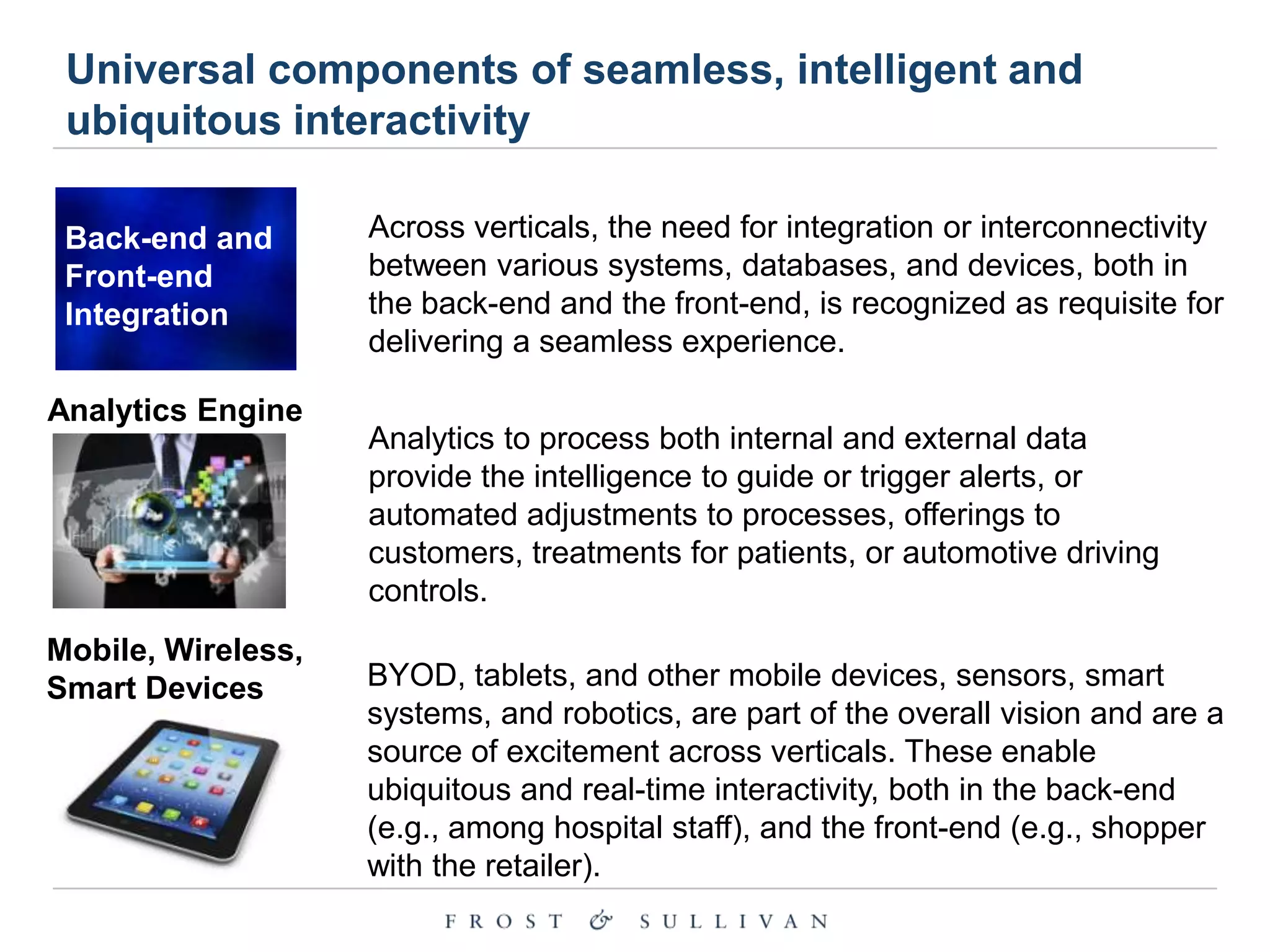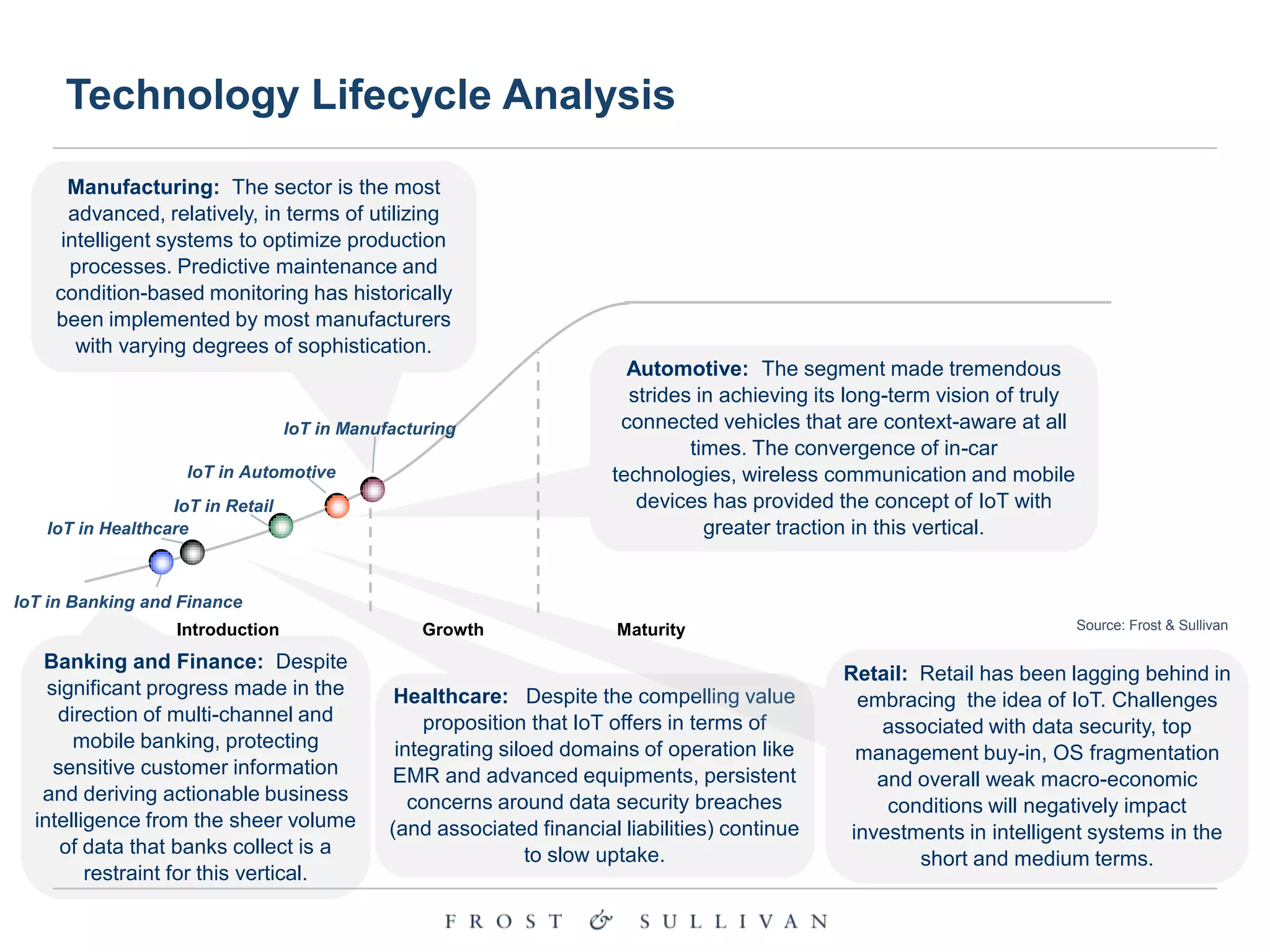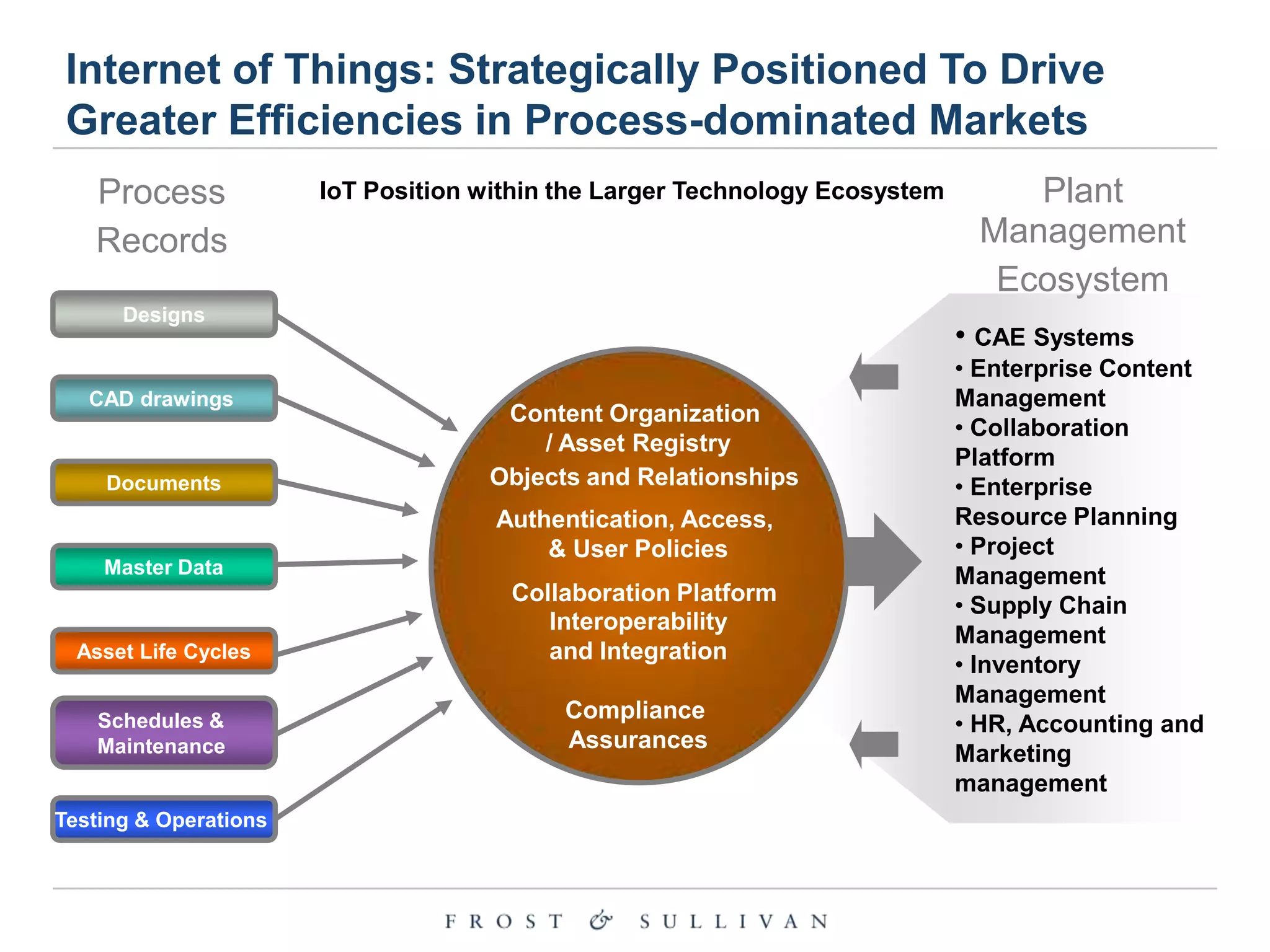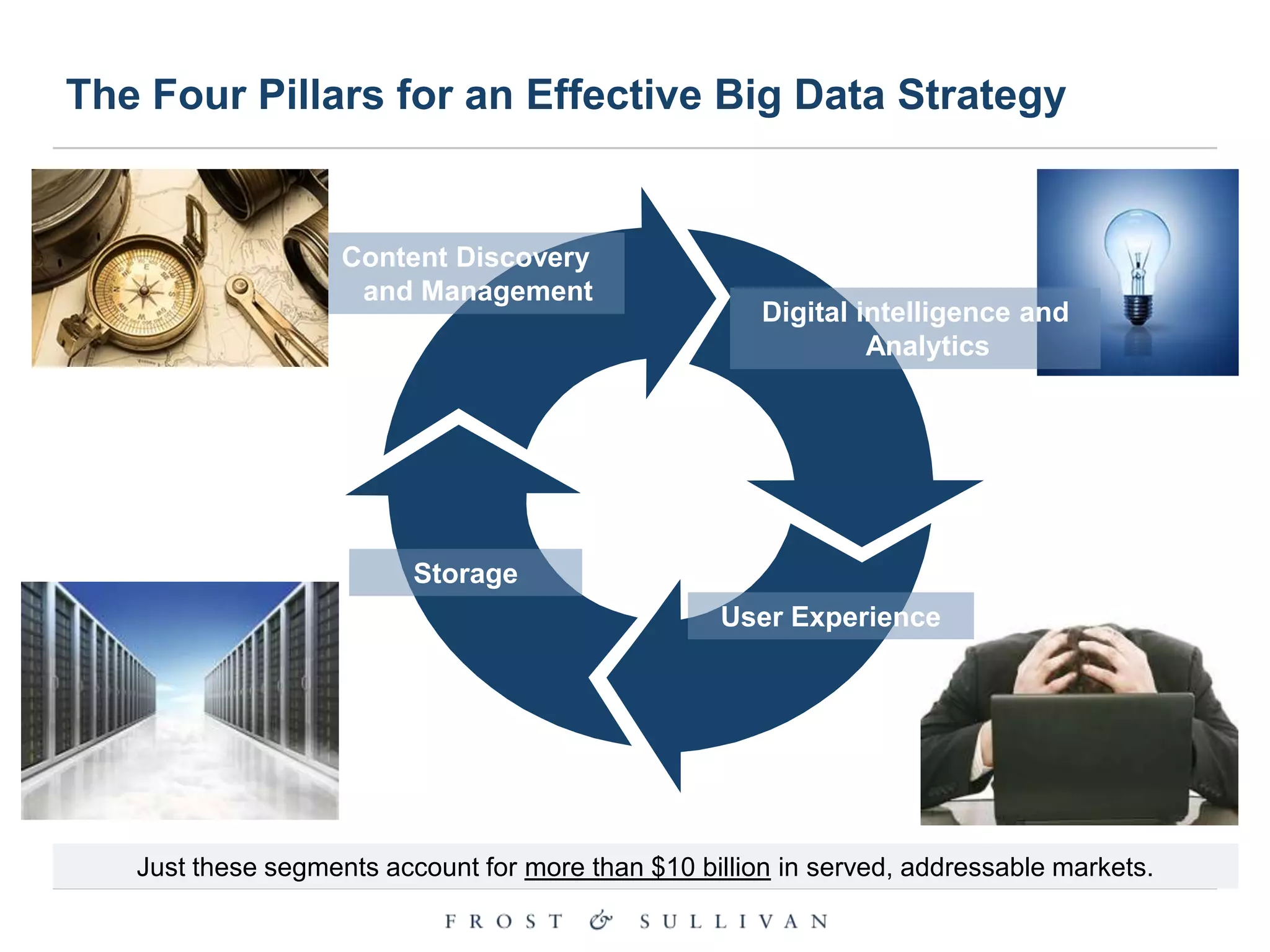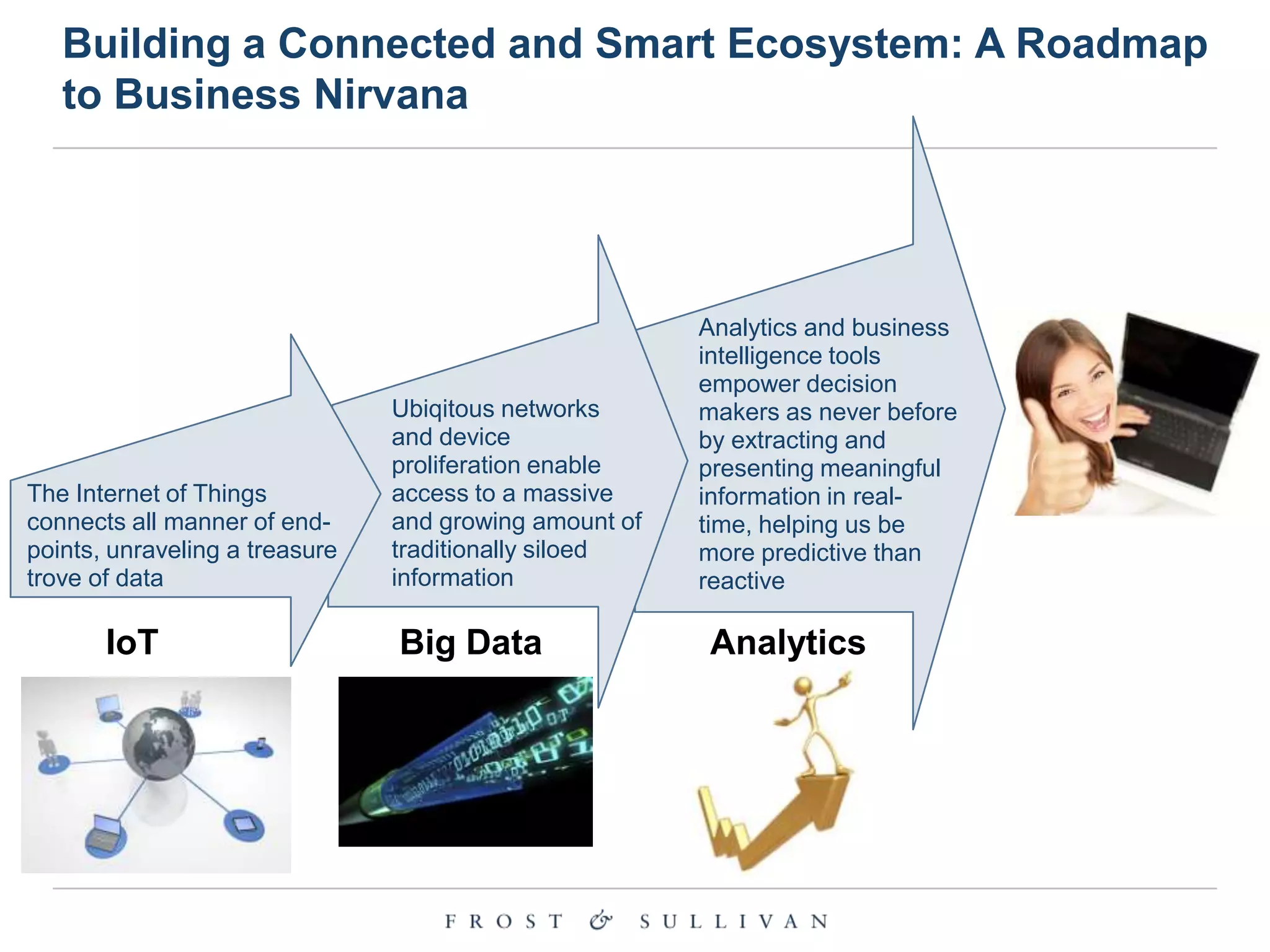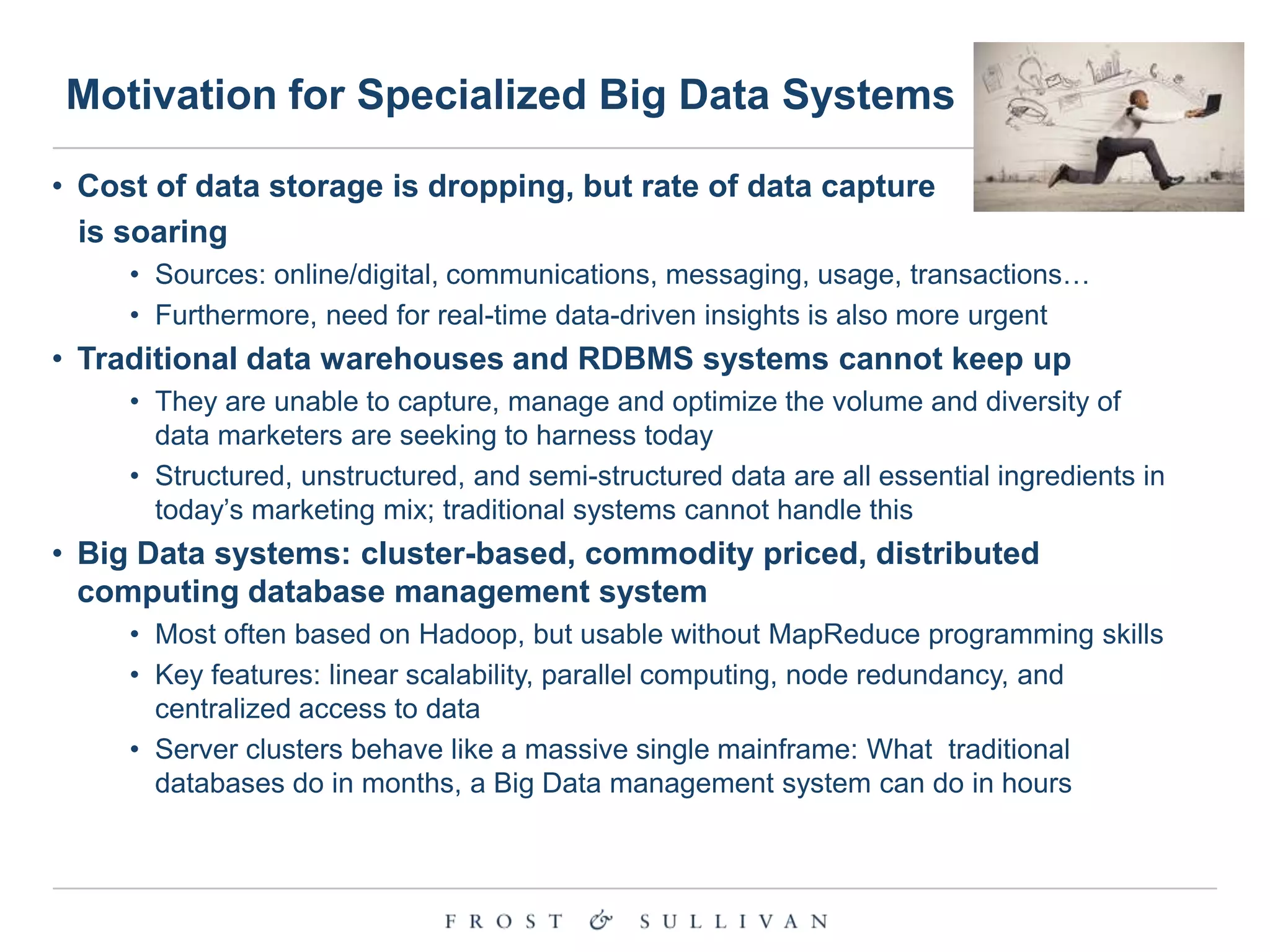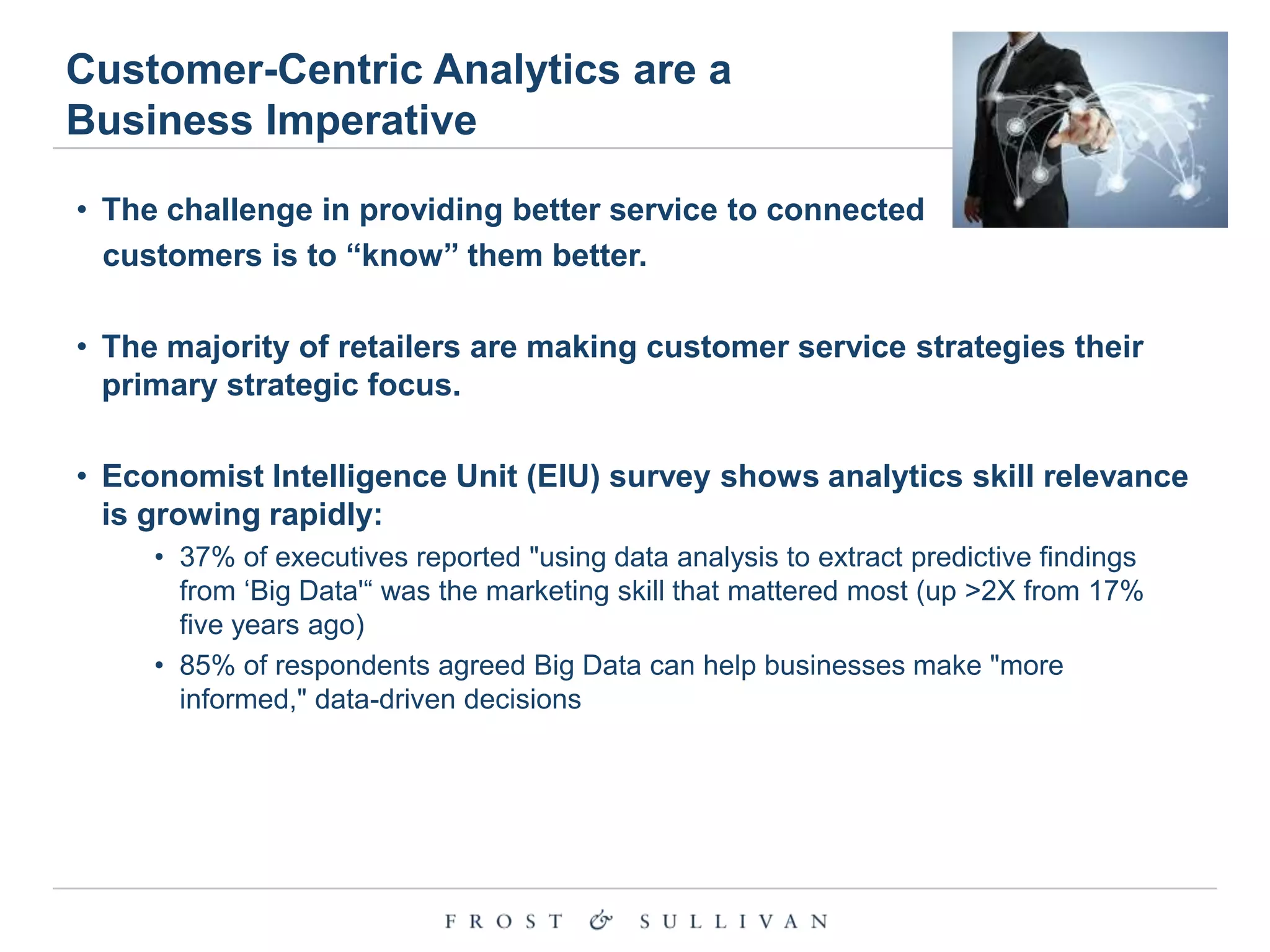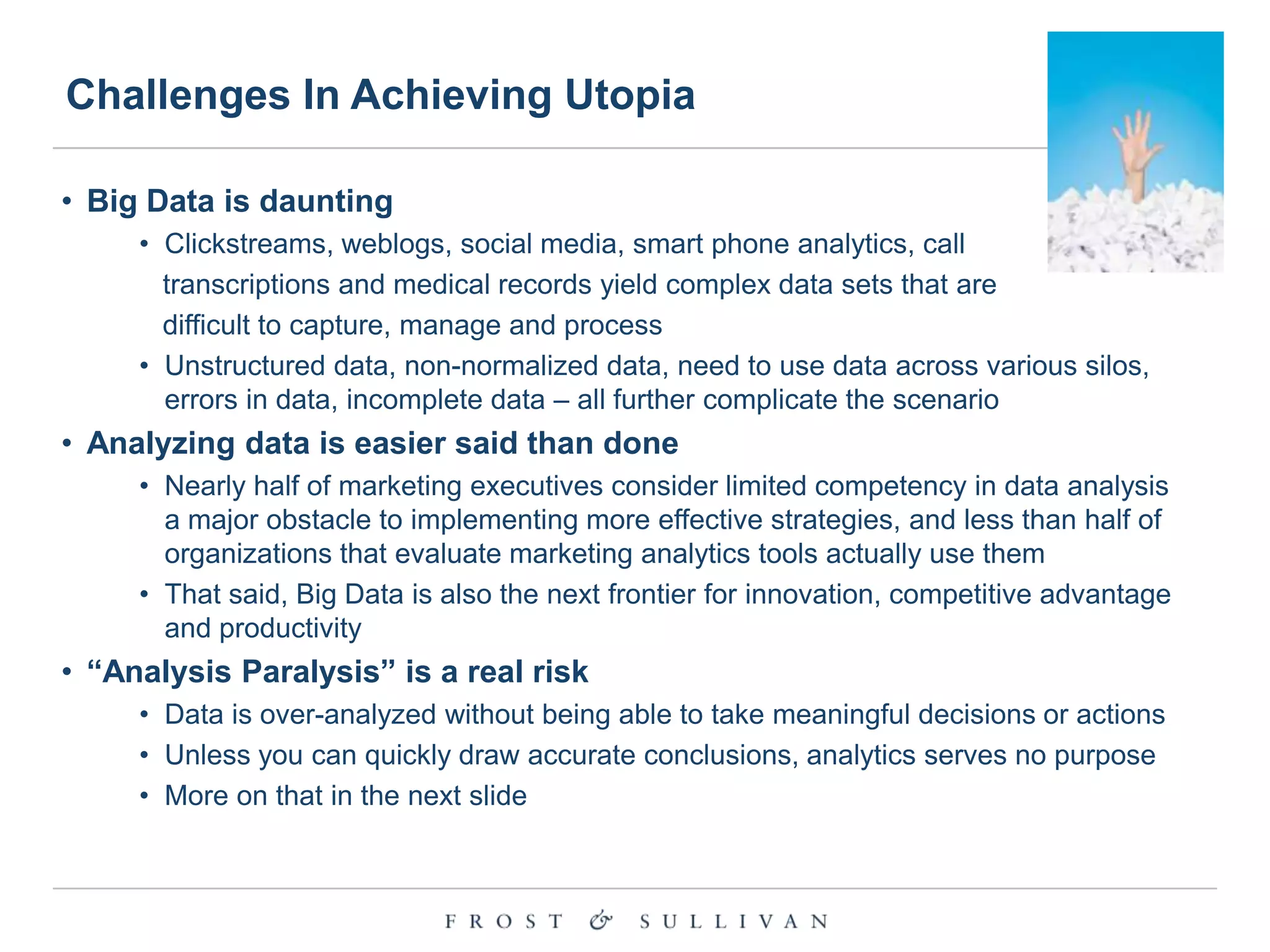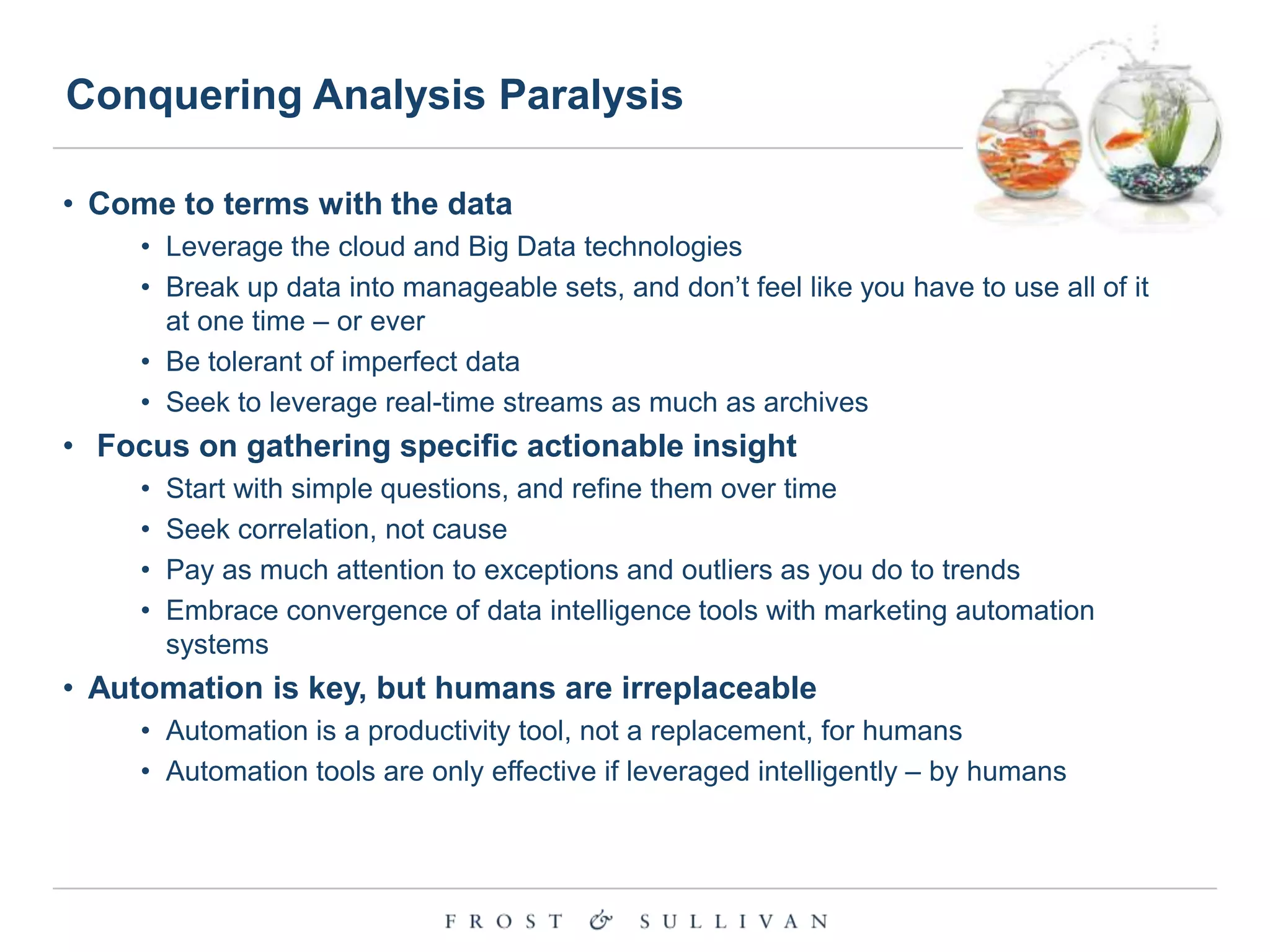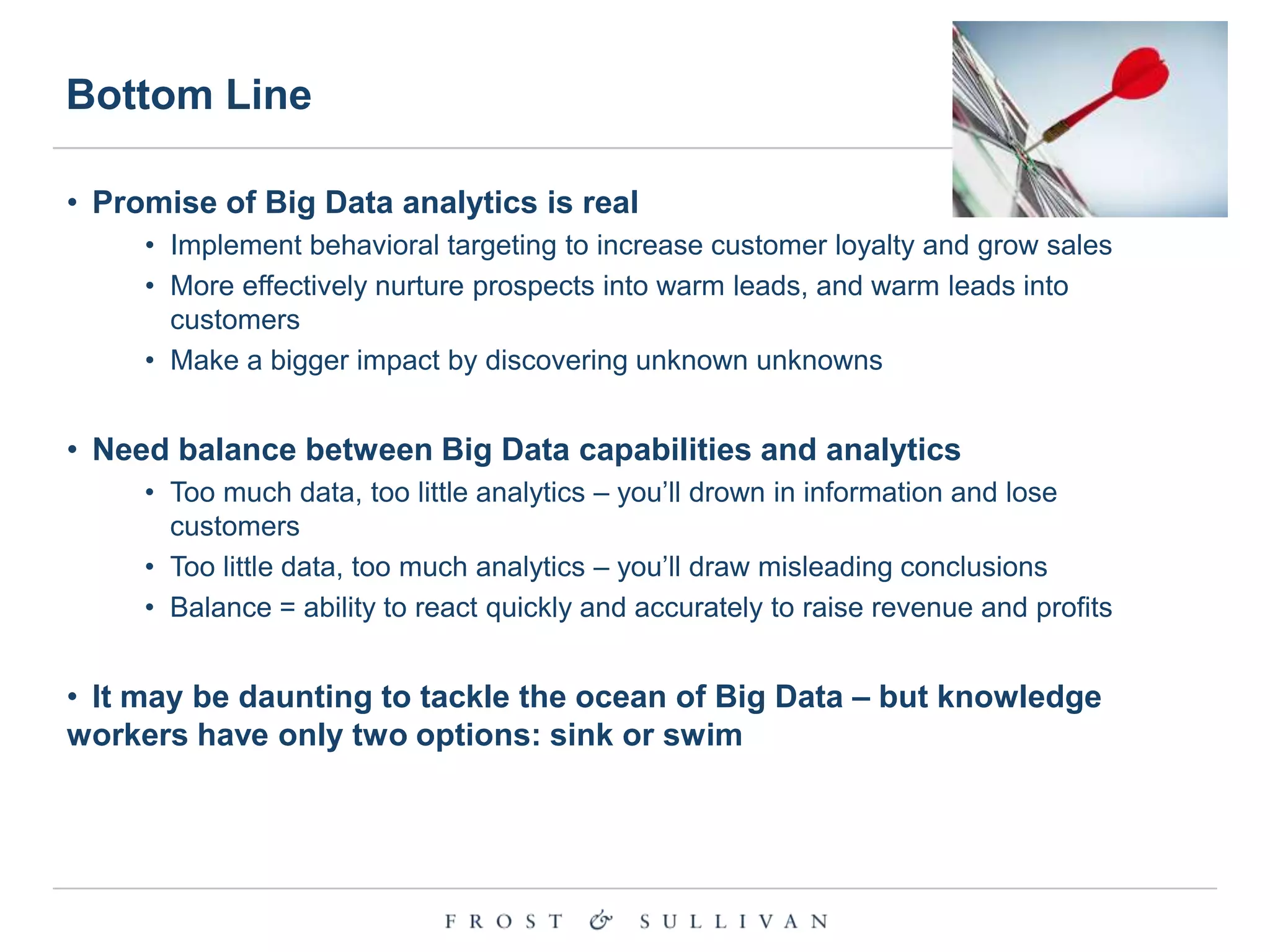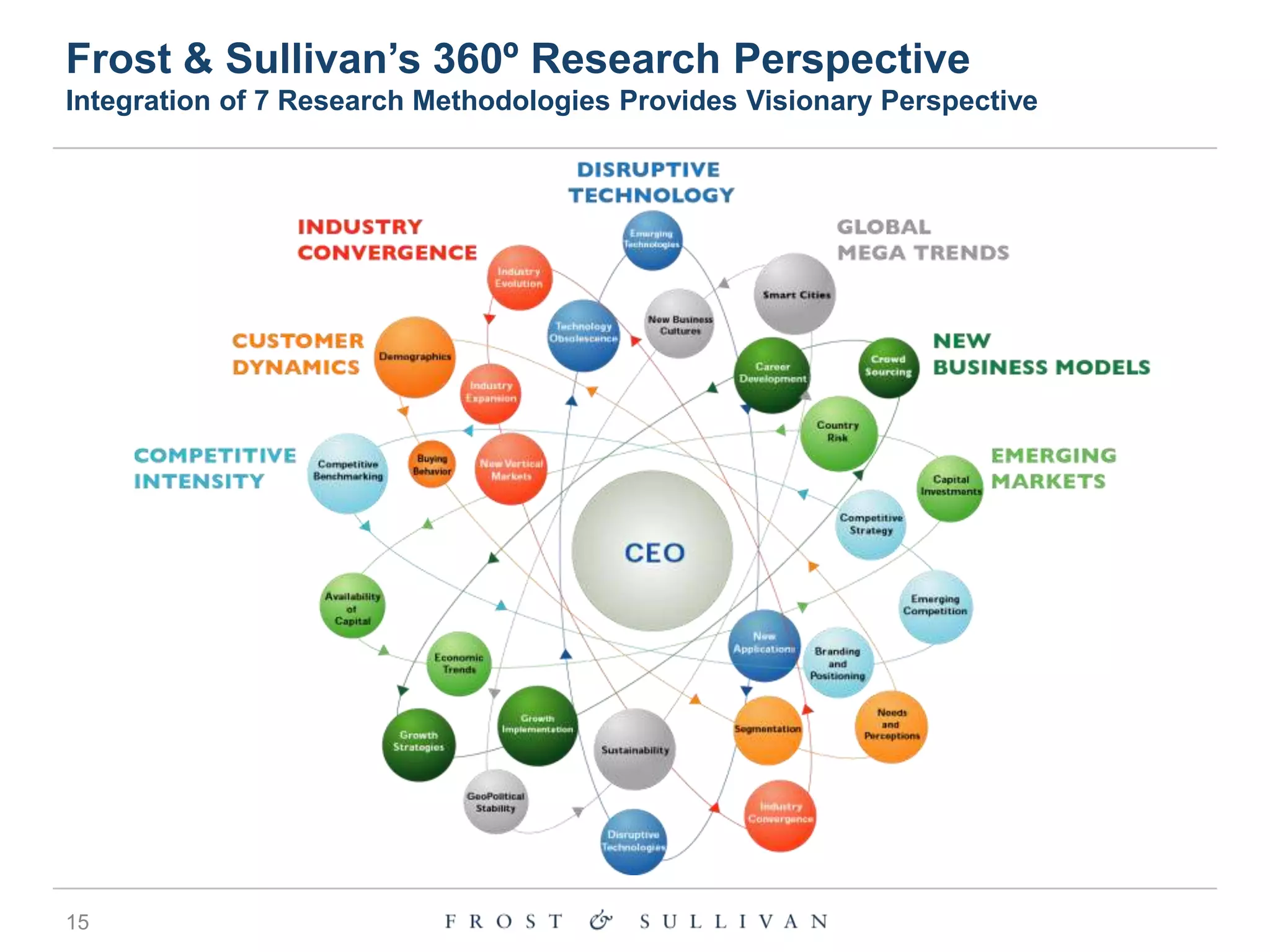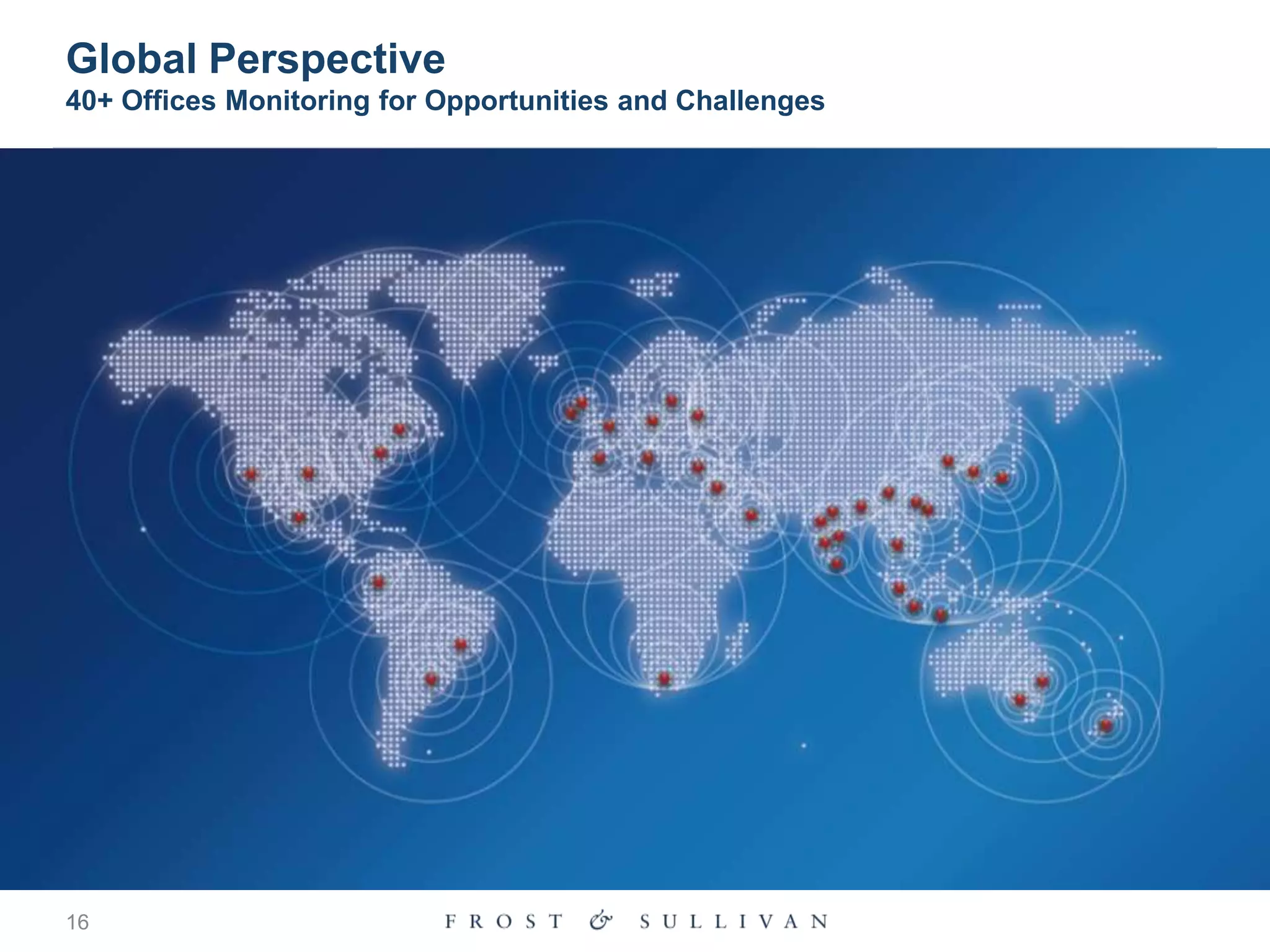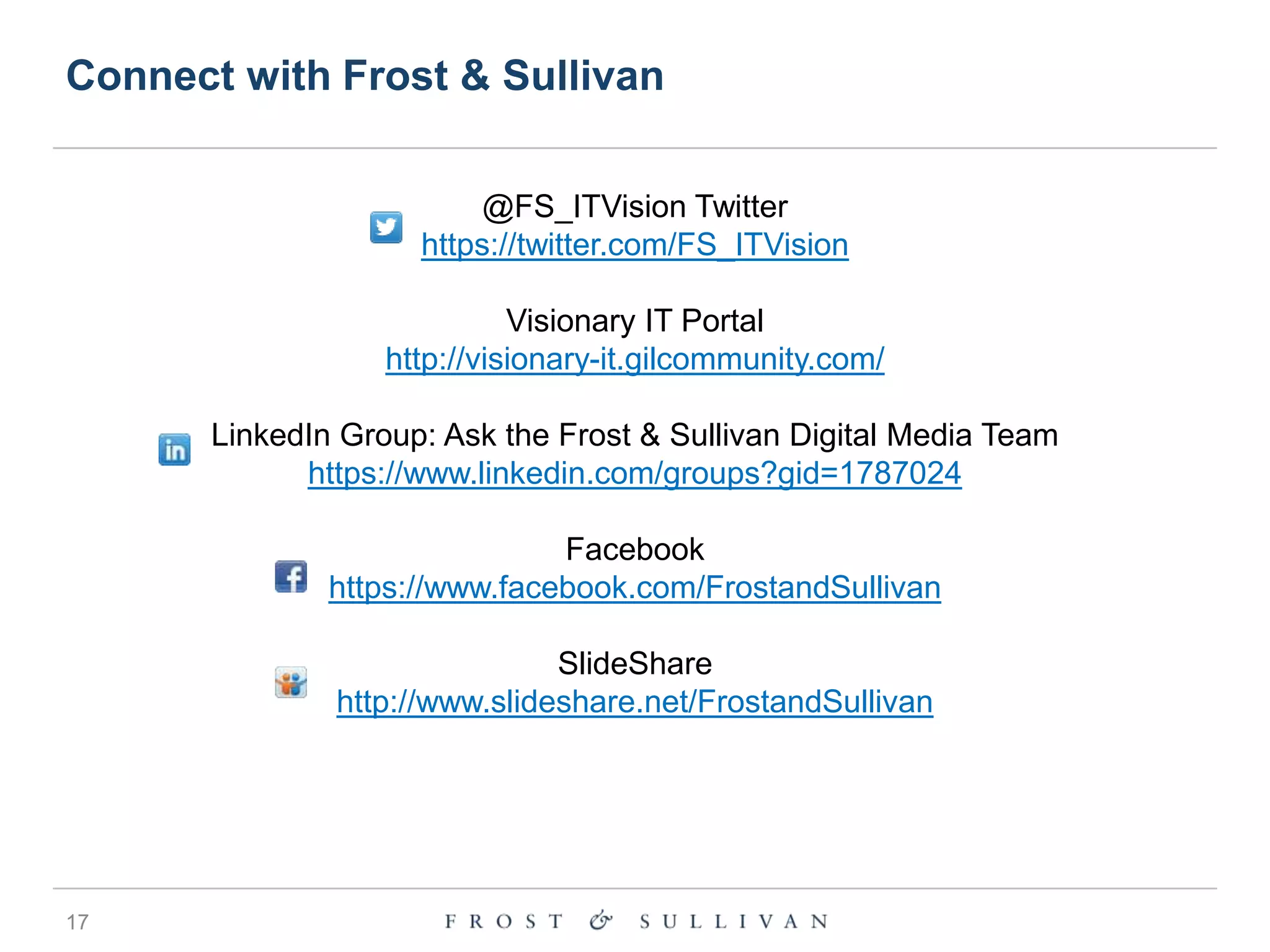The document discusses the impact of the Internet of Things (IoT), big data, and analytics across various sectors, emphasizing the importance of seamless interconnectivity and data integration for enhancing efficiency, personalization, and customer experiences. It highlights challenges such as data security and organizational readiness that hinder the adoption of IoT solutions in sectors like healthcare and retail. Additionally, it underscores the necessity for effective big data strategies, balancing data with analytics to drive informed decision-making and improve customer engagement.
